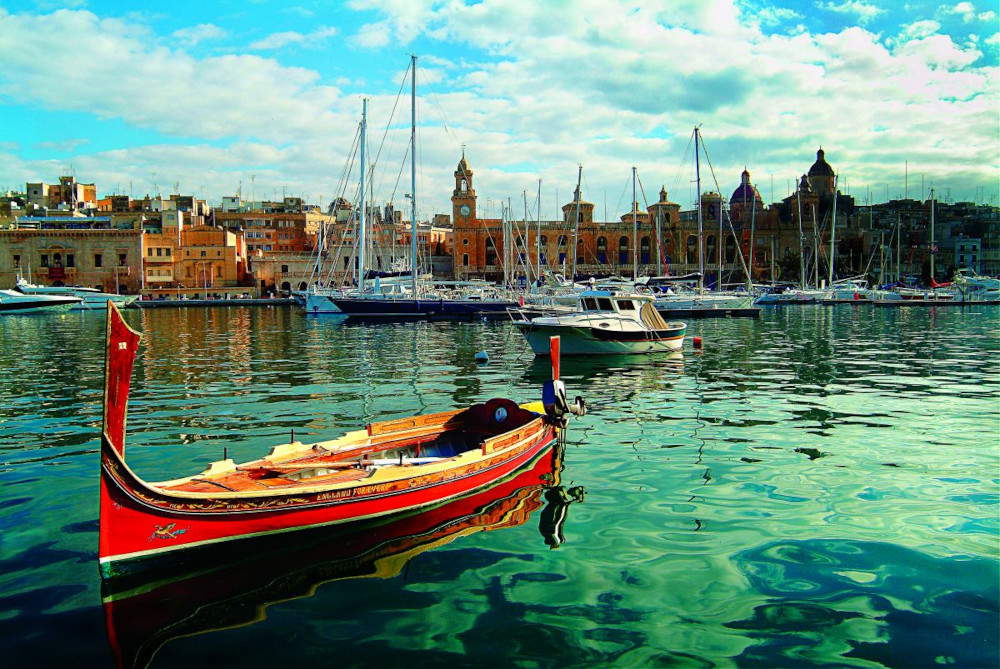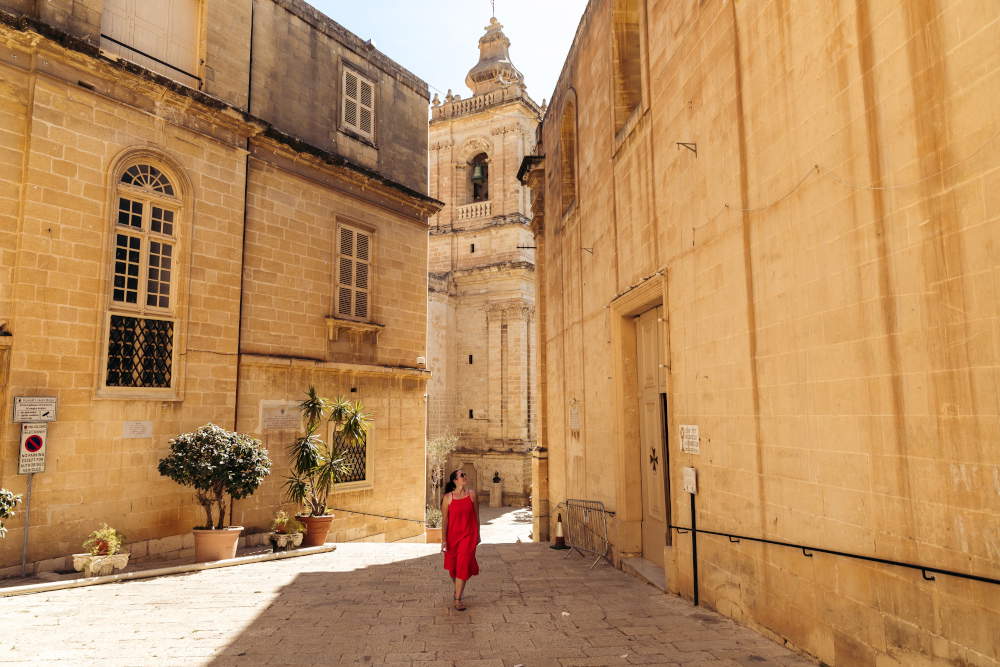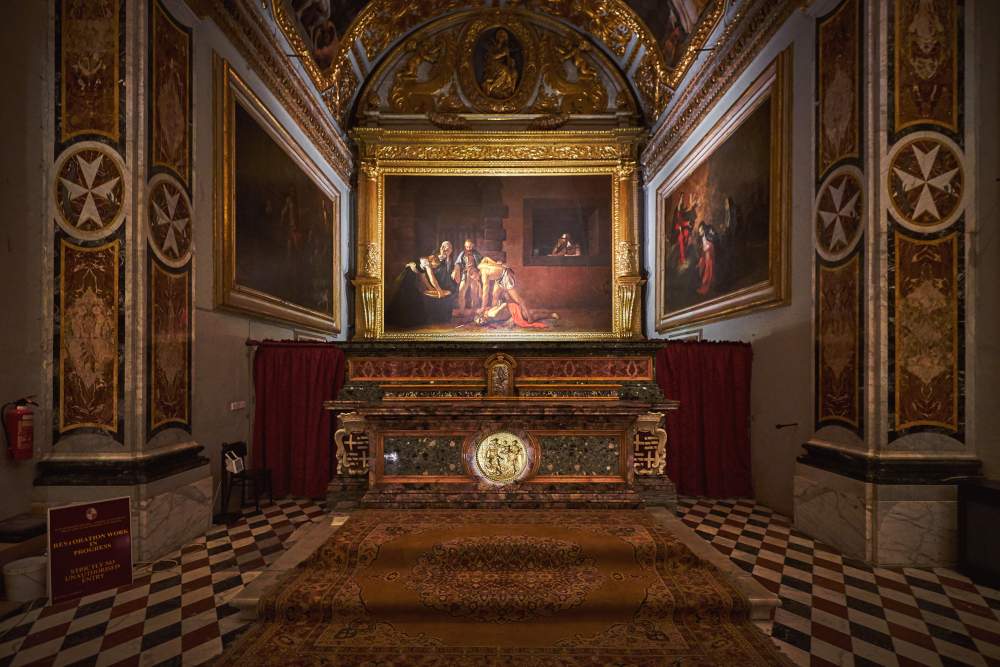In the Lives of the historiographer Giovan Pietro Bellori we read that “Caravaggio reputasi felicissimo con l’honore della Croce,” referring to when the famous painter obtained the title of Knight of Malta thanks to the portrait he painted for the Grand Master of the Knights of Malta, the Frenchman Alof de Wignacourt (Flanders, 1547 - Valletta, 1622). The first painting Caravaggio executed in Malta was precisely the portrait of Wignacourt, shown standing and armed, now in the Louvre, and the patron liked it so much that he “gave him the Cross as a prize.” Appointed a Knight of the Magistral Obedience (the lowest rank since higher ones were reserved for the nobles) a year after his arrival in Malta, on July 14, 1608, and most felicitous “in the praises of painting, living in Malta with decorum of his person and abundant with every good,” that prosperous state of his soon became the opposite, for as early as August Caravaggio (Michelangelo Merisi, Milan, 1571 - Porto Ercole, 1610) ended up in jail, “reduced to ill terms of ragging and fear,” because “come he importunamente to contention with a most noble knight.” He was in fact arrested and imprisoned in Fort Sant’Angelo guilty of having wounded the Asti nobleman Giovanni Rodomonte Roero, also a knight, in a brawl. In order to free himself, Bellori tells us, “he exposed himself to the gravest danger, and entered the prison at night, and escaped unknown to Sicily, so soon that he could not be reached”: he managed to escape from the Fort on October 6, undoubtedly aided by someone, leaving the island forever and seriously violating the Statutes of the Order. Therefore, two months later, on December 6, the Knights expelled Caravaggio from the Order as “membrum putridum et foetidum” because by escaping he had betrayed a fundamental passage of the Knights’ Statutes: “It is not licit nor in any way permitted, to any of our Brothers, habbiano any Dignity, or Office to depart covertly or openly, without express license of the Master, reduced in writing.” Within two months of his flight to Sicily, he was thus stripped of his desired title in theOratory of St. John Decollate(which we have discussed in this article), which, in addition to being the hub of the religious life of the knights, was also the place where the trials of the tribunal that judged members of the Order who were guilty of some fault were held. The sentence by which the Knights of Malta expelled Caravaggio from the Order was read in the very same Oratory, built by Wignacourt next to the Valletta Co-Cathedral, and right under one of Merisi’s greatest masterpieces, his only signed work: the Beheading of St. John the Baptist. In the short time of his stay in Valletta he in fact managed to complete this monumental painting, which was directly commissioned by the Grand Master of the Knights of Malta, whose setting recalls precisely a prison. Like the one from which the painter managed to escape.
There are two works by Caravaggio that can still be admired in the Maltese capital: in addition to the aforementioned The Beheading(to which we have devoted an in-depth article), in the Co-Cathedral of St. John is the Writing St. Jerome: this is a work of smaller dimensions but which equally testifies to the expressive charge typical of the famous Lombard painter. It was commissioned from him by his friend Ippolito Malaspina, a knight from Lunigiana, for the Cappella della Lingua d’Italia, one of the eight side chapels of the Cathedral that symbolize the different languages spoken by the Order (those of Italy and France are the two near the altar).
The construction of the Co-cathedral is due to Jean de la Cassiere, Grand Master of the Order of Knights, who commissioned it in 1572 from architect Jerome Cassar. Completed in 1577, with its austere facade, the interior was renovated in the Baroque style with gilded motifs: the building is considered one of the architectural masterpieces of the Baroque. The vault was masterfully frescoed by Mattia Preti with scenes from the life of St. John the Baptist. The Co-cathedral is also a symbol of Malta’s resistance to the Great Siege by the Ottoman Turks in 1565: the knights won over the Ottomans who had besieged the island to expand into the western Mediterranean, driving them away and causing severe damage to the army. Distinguishing himself in this event was Wignacourt, who would later become Grand Master of the Order in 1601. Once the Co-cathedral was built, the latter in fact decided to dedicate it to the patron saint of the Knights of Malta, namely St. John the Baptist.





Even before Valletta was the political center of Malta, the Knights of the Order built the so-called Three Cities(Senglea, Vittoriosa and Cospicua) as defensive places from external threats. They played a central role in the Great Siege of 1565. It is possible to reach these Three Cities aboard the Dghajsa, the typical Maltese boat driven by barklori that can accommodate up to six people and can cross the Grand Harbour in a quarter of an hour (for example, from Valletta to Birgu - Vittoriosa in Maltese) or circumnavigate it in half an hour.
Senglea (Isla in Maltese) is Malta’s smallest town. It is named after Claude De la Sangle, Grand Master of the Order of Malta who was responsible for its construction. Almost destroyed by bombing in World War II, it was rebuilt in the mid-20th century, and today walking through its narrow streets adorned with colorful balconies is enchanting. A symbol of Senglea is the lookout tower of Gardjola from which there is a panoramic view. The tower features an eye and an ear on its sides, symbolizing the knights’ continuous surveillance of the town.
Cospicua, in Maltese Bormla, is the newest (declared a city in 1722) and largest of the Three Cities. However, it retains structures dating back to megalithic times, as well as defensive structures built by the Knights of Malta. The Church of the Immaculate Conception, which preserves valuable paintings, is worth visiting. The latter is famous for having miraculously withstood the bombings of World War II.
Finally, Vittoriosa, in Maltese Birgu, was Malta’s capital before Valletta. The Knights replaced it with Mdina because of its privileged location. In the Great Siege, Vittoriosa played a central role, and the main bastion of defense was Fort St. Angelo, where Caravaggio was imprisoned in 1608. At the time of the 1565 siege, the Knights began to send considerable funds that gave the Order’s Grand Master Jean de la Vallette the opportunity to build a new fortified city, Valletta. Today Vittoriosa is distinguished by the quaint locales in the marina area and the presence of museums, such as the Palace of the Inquisition and the Maritime Museum, through which one can learn more about Malta’s history. In October, moreover, the annual Birgufest takes place, during which the streets of the city are lit up with lots of candles, making the atmosphere particularly atmospheric.
This itinerary in the footsteps of Caravaggio and the Knights of the Order of Malta can end where the painter’s stay in Malta also ended: the Fort St. Angelo. At the center of the Grand Harbour, on the extreme tip of Vittoriosa, it is symbolic of the island’s strategic role, especially since the Great Siege by the Ottoman Turks. On a fortified settlement from Roman times known as Castrum Maris, the Fort was modified between 1530 and 1690 and suffered direct blows during World War II. Today Fort St. Angelo offers impressive panoramic views of the Grand Harbour and surrounding towns, thus serving an attractive function from a tourist point of view. Caravaggio, however, would not have thought of it in the same way: he had a completely different memory of the fort.



 |
| Malta, itinerary in the footsteps of Caravaggio and the Order of the Knights, from Valletta to the Three Cities |
Warning: the translation into English of the original Italian article was created using automatic tools. We undertake to review all articles, but we do not guarantee the total absence of inaccuracies in the translation due to the program. You can find the original by clicking on the ITA button. If you find any mistake,please contact us.